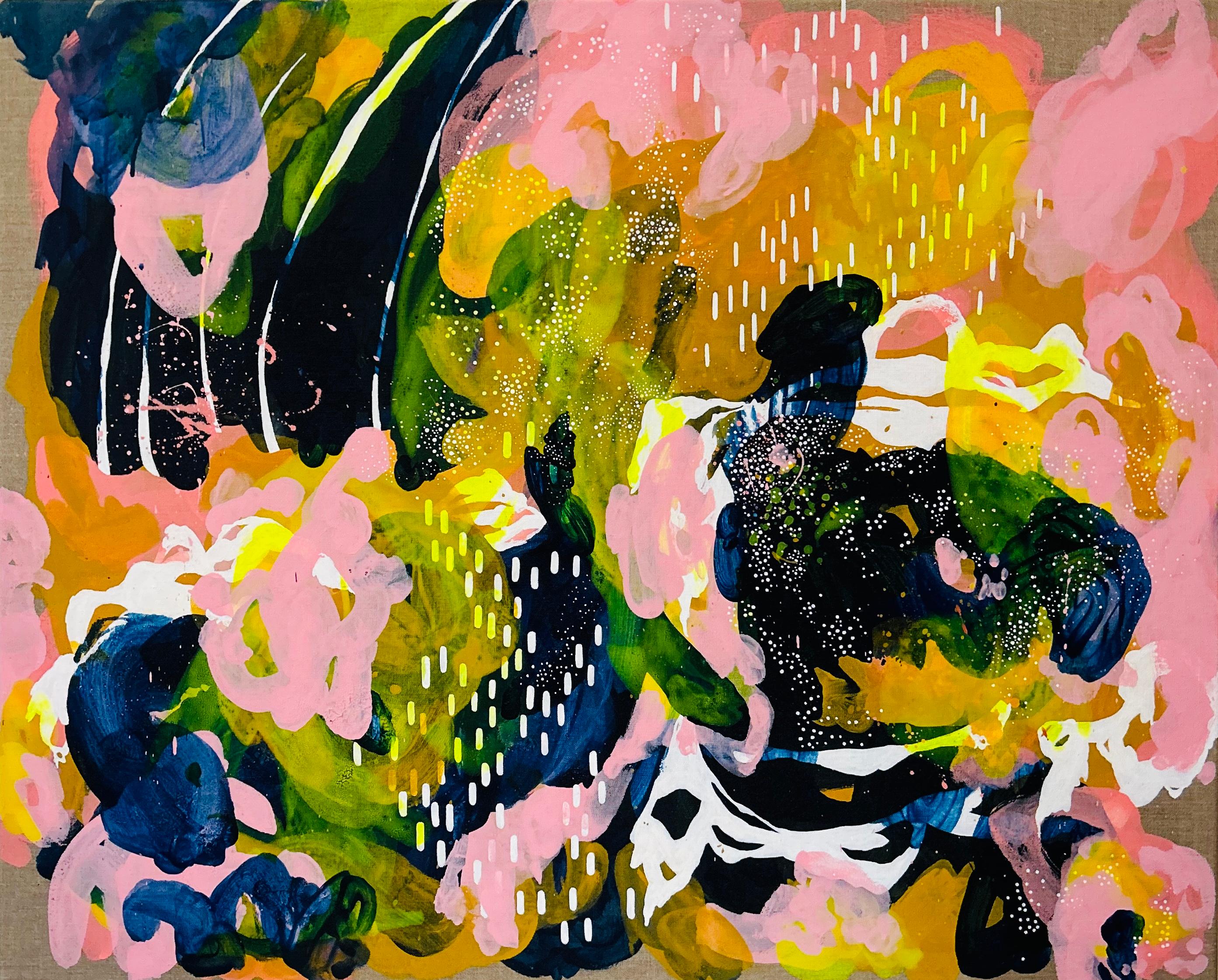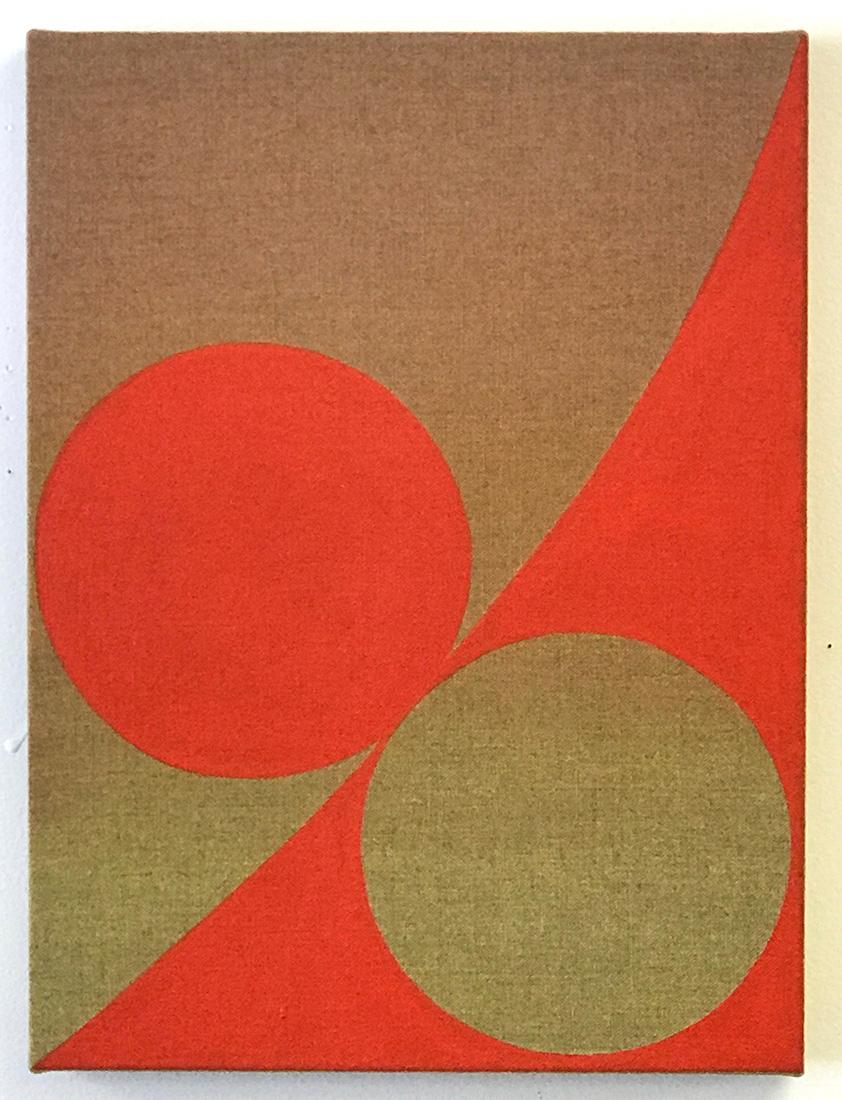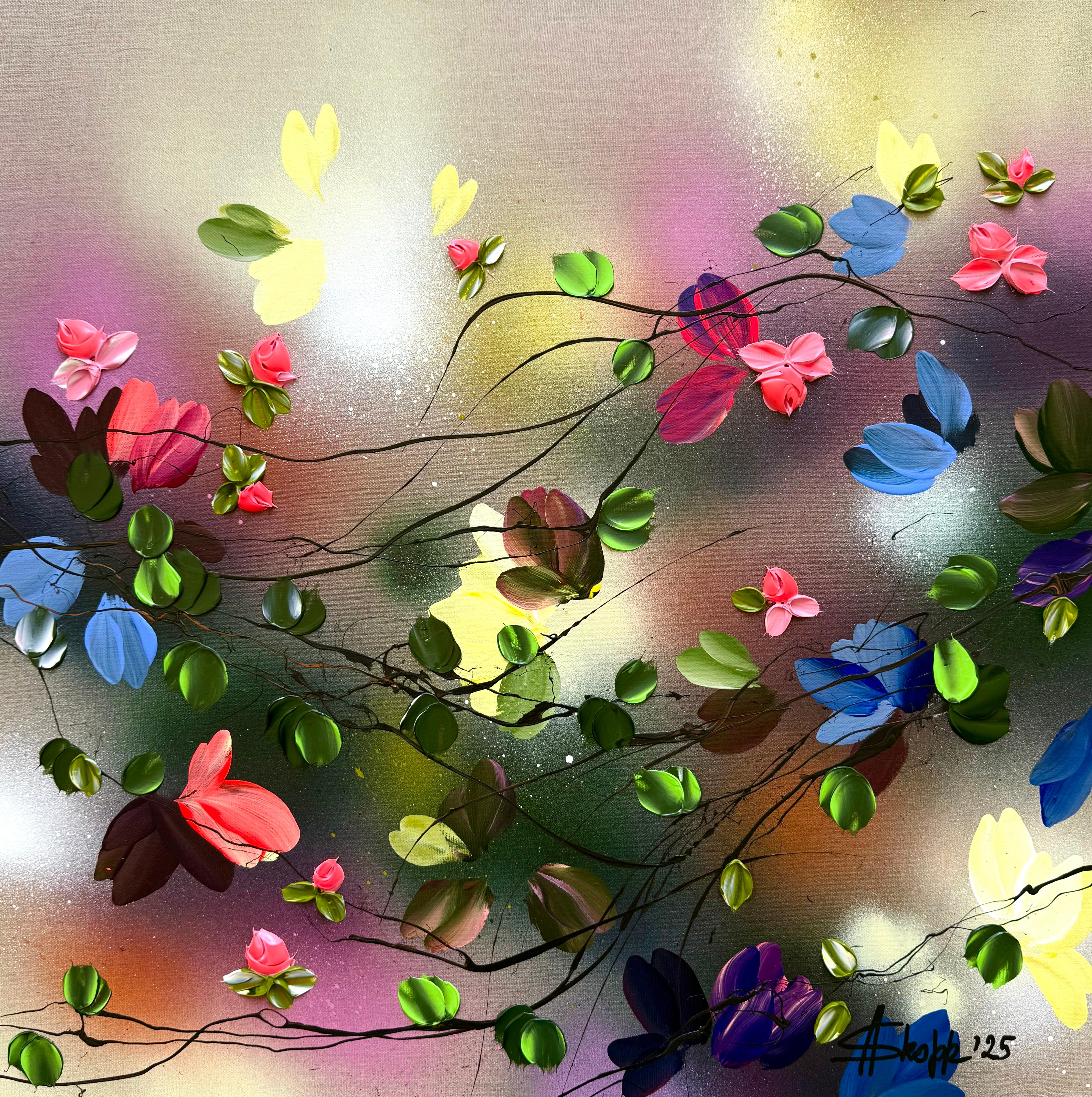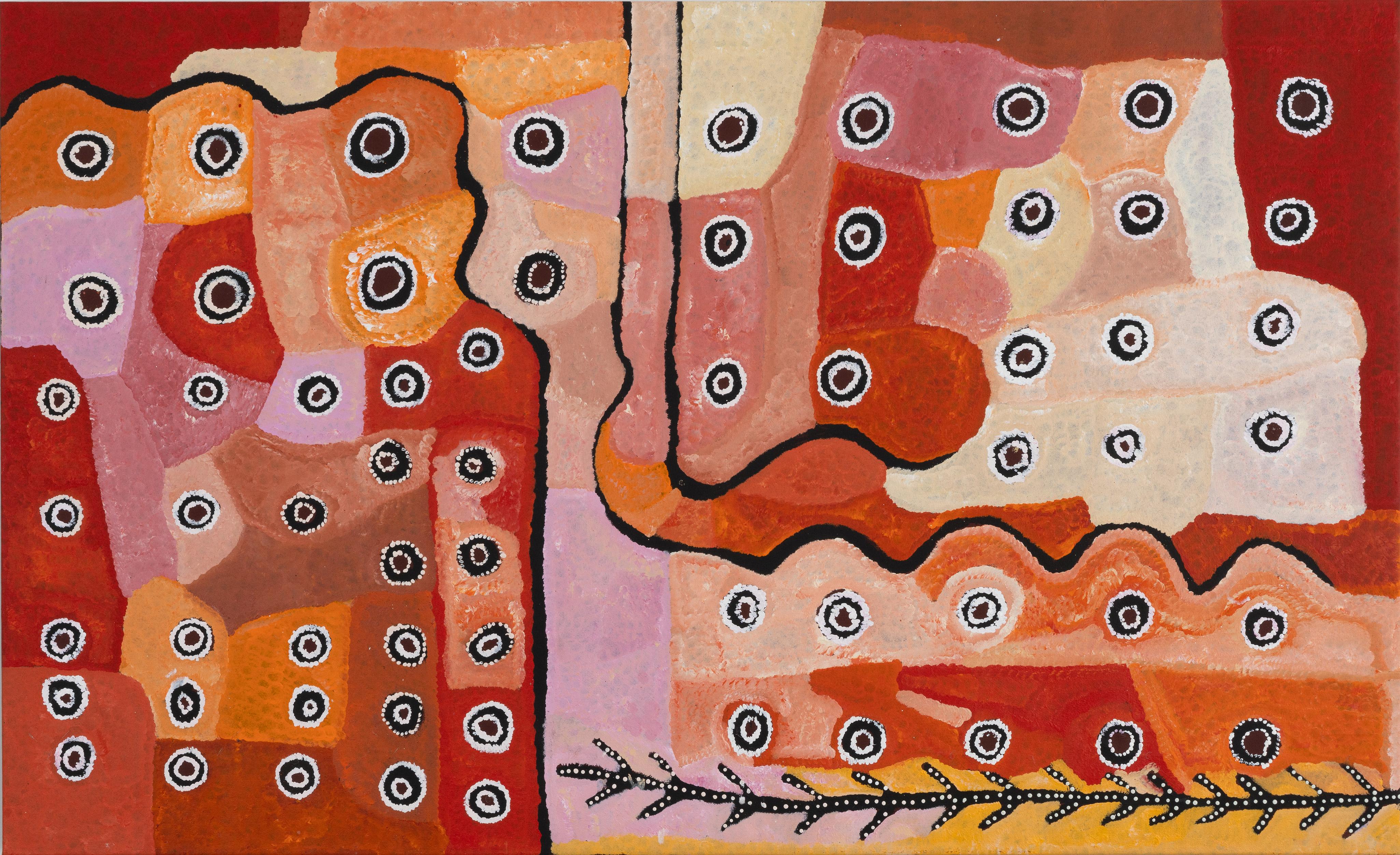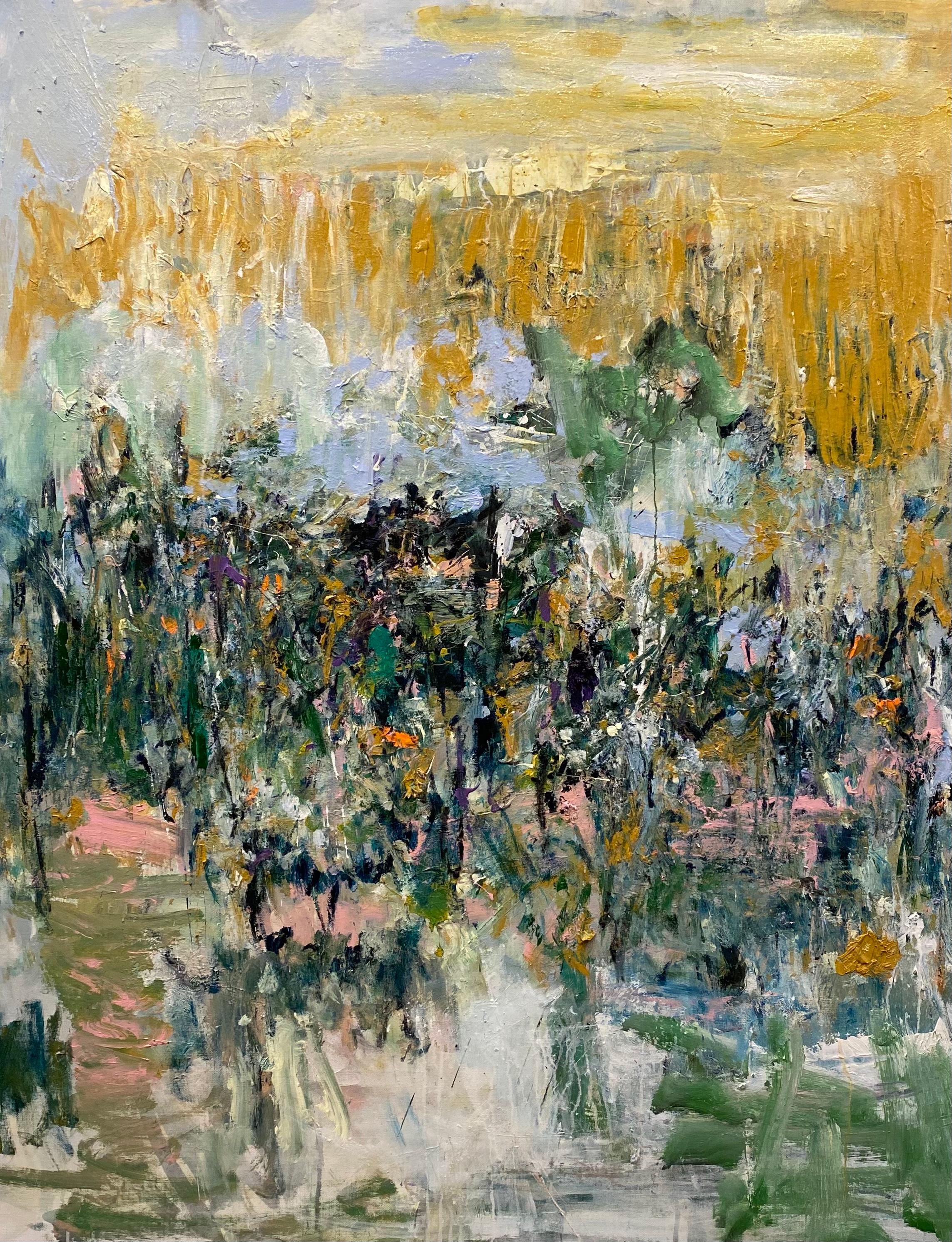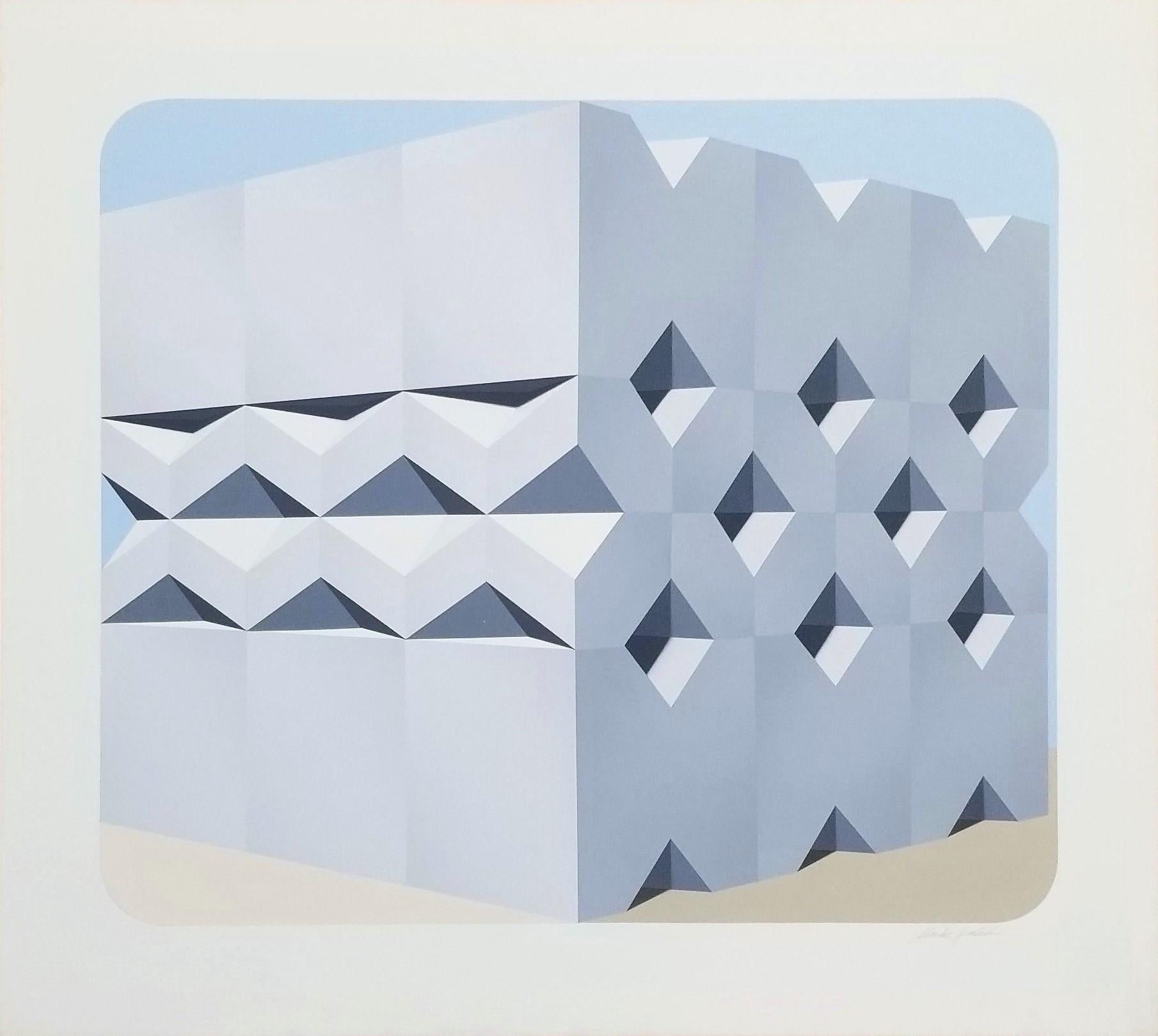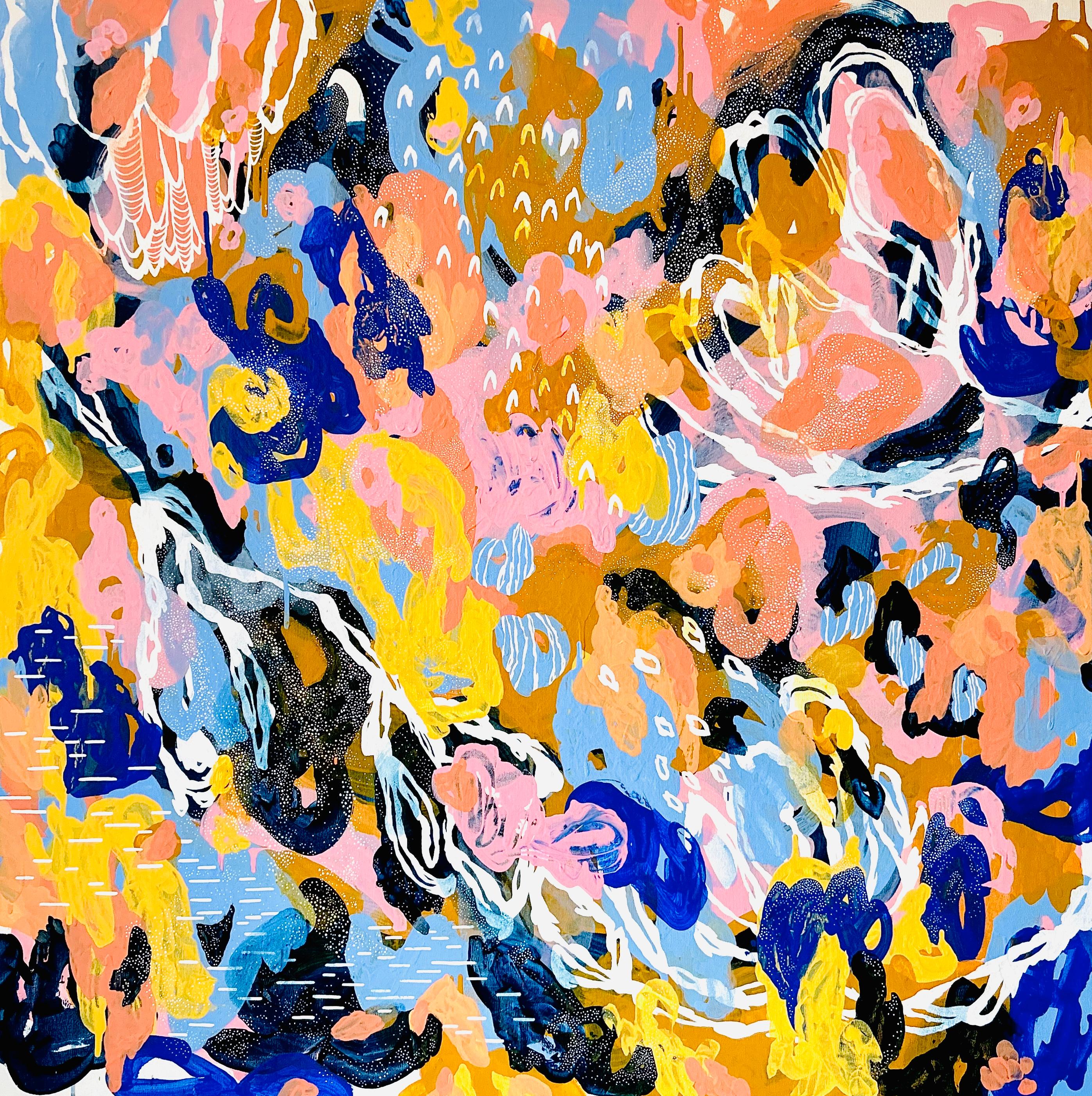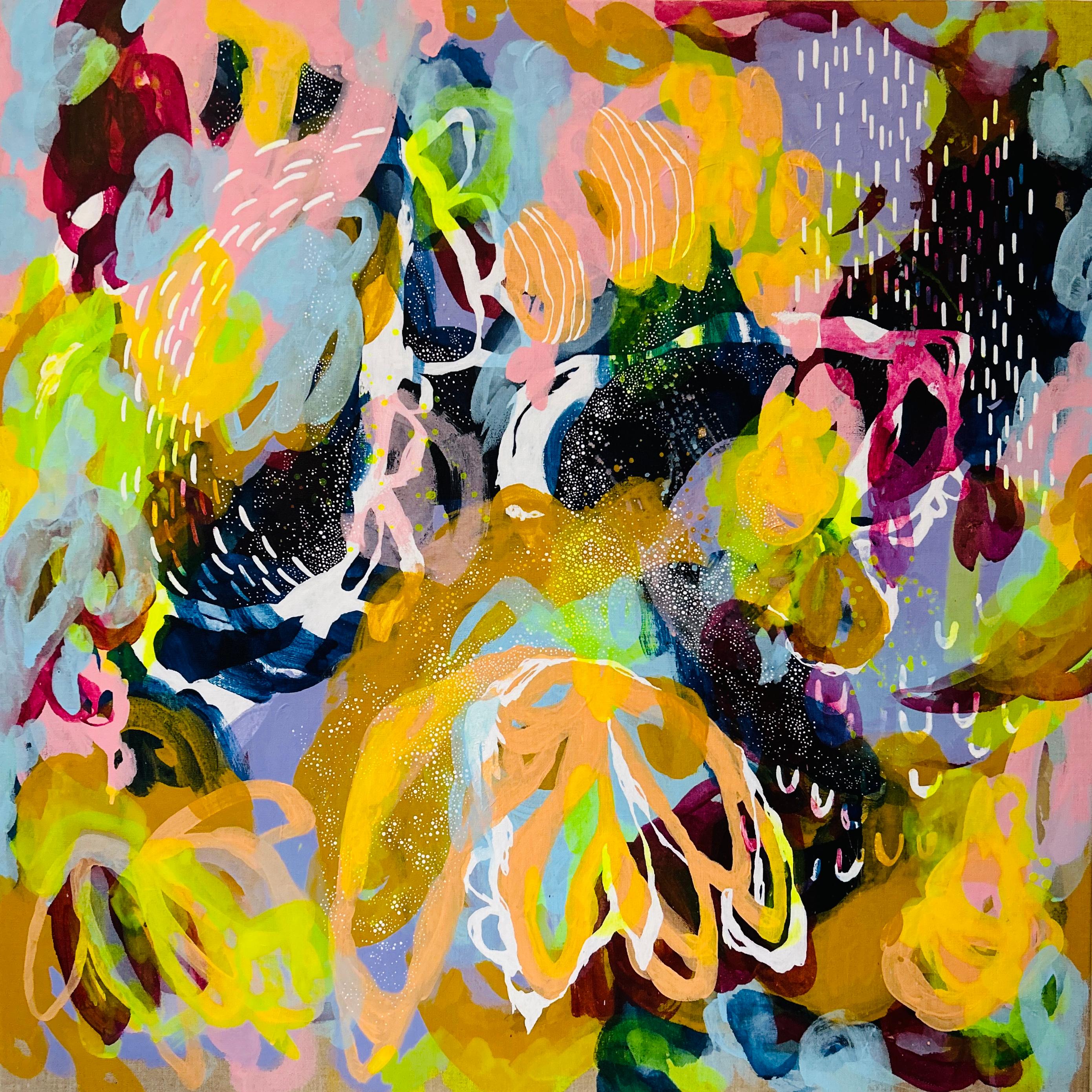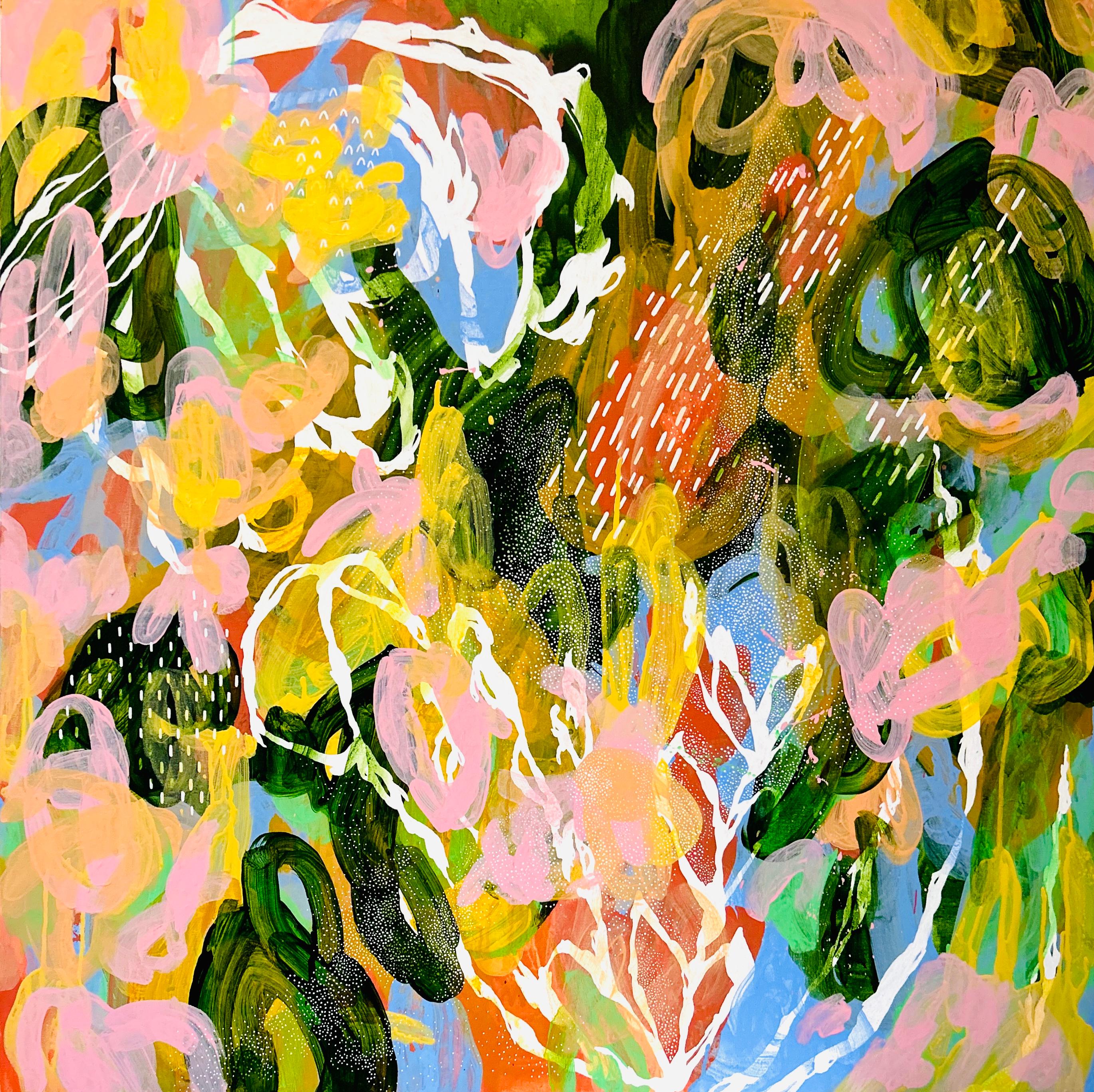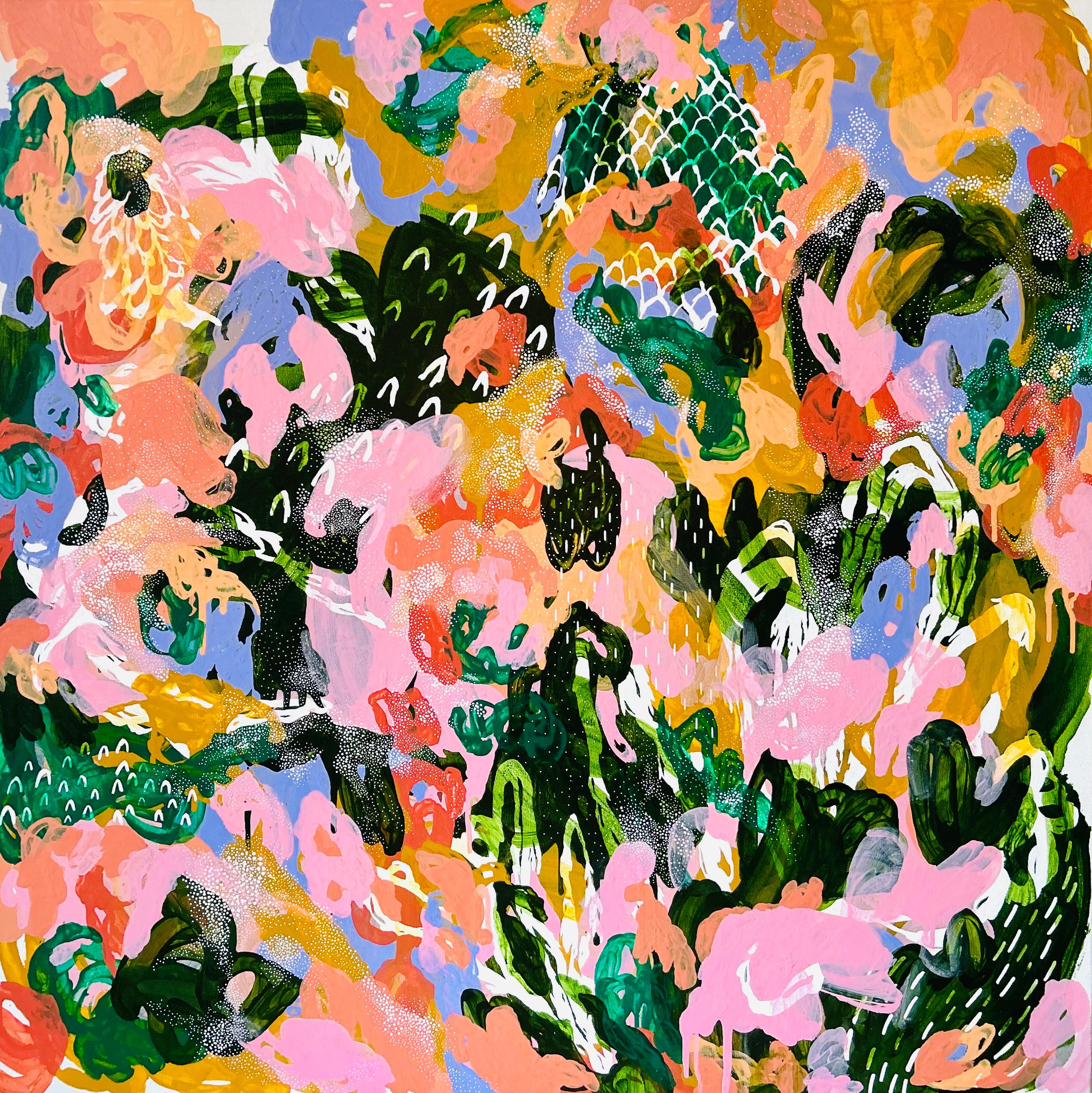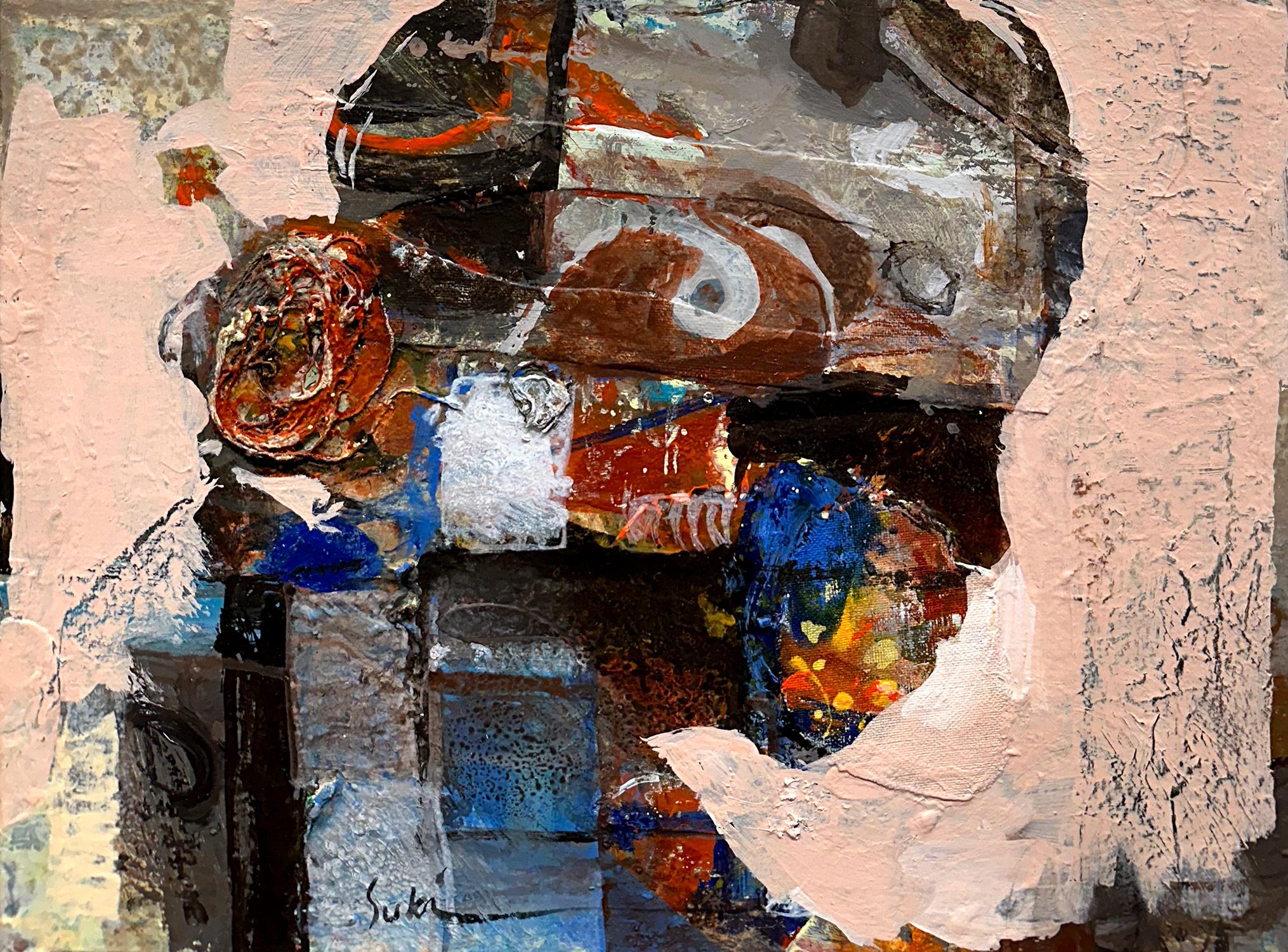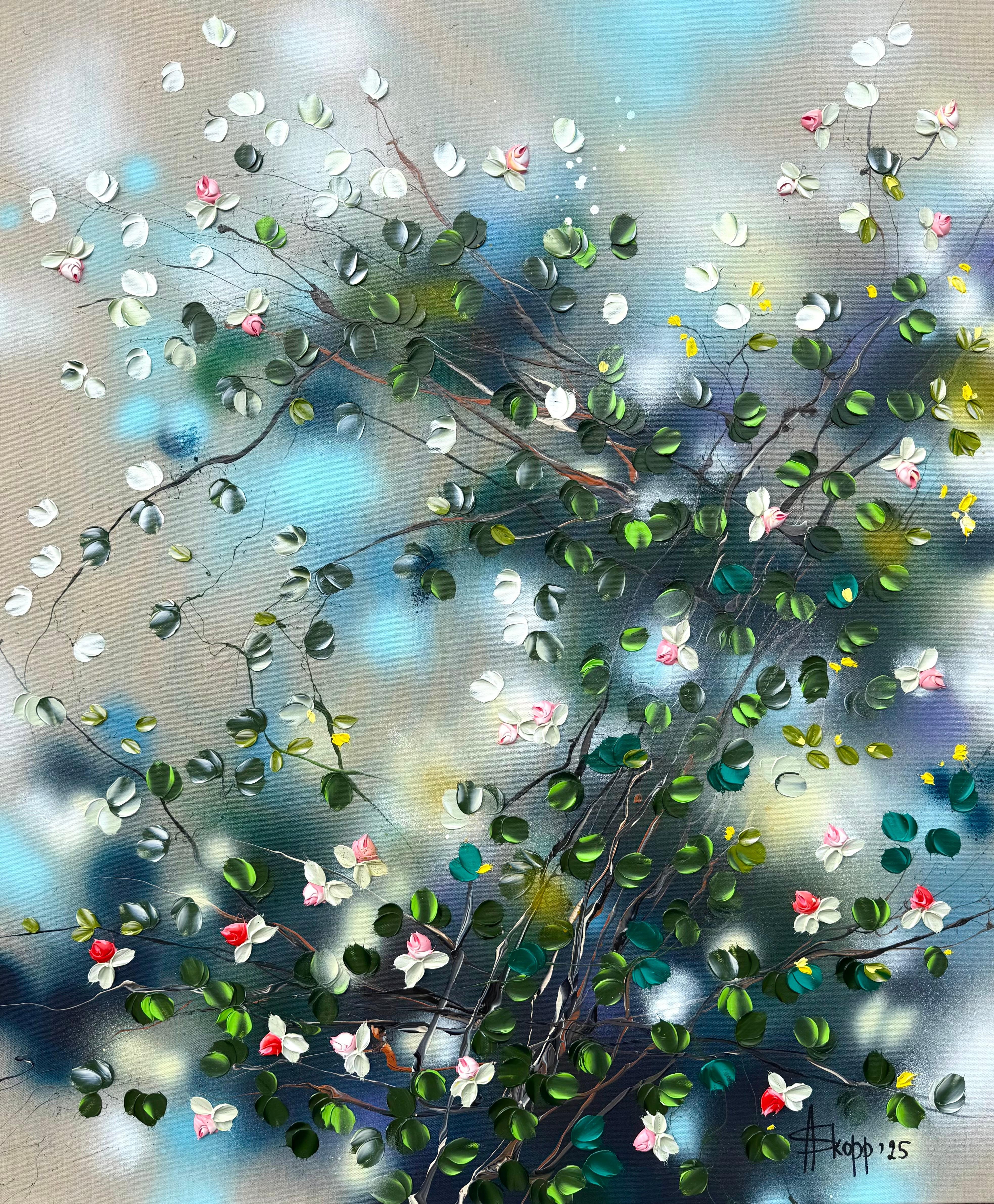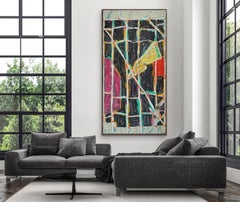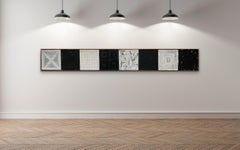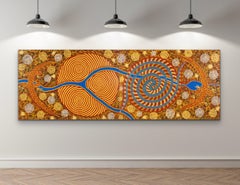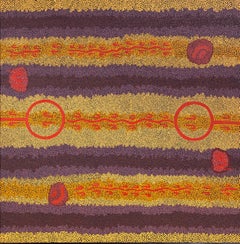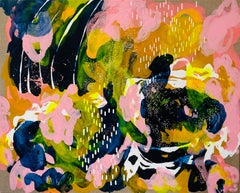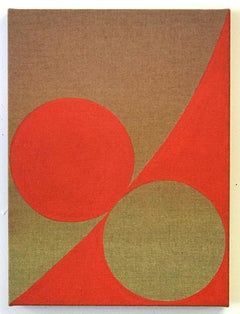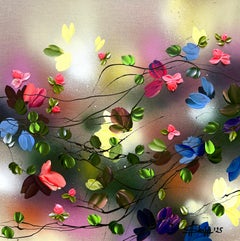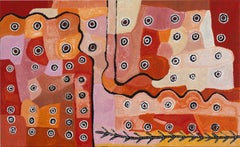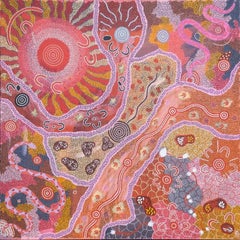
Six Dreamings (Fire-Snake-Women Ceremony-Flying Ant-Emu) LARGE Aboriginal 1997
View Similar Items
Video Loading
Want more images or videos?
Request additional images or videos from the seller
1 of 14
Maureen Nampajinpa HudsonSix Dreamings (Fire-Snake-Women Ceremony-Flying Ant-Emu) LARGE Aboriginal 19971997
1997
Price:$14,000
$17,500List Price
About the Item
- Creator:Maureen Nampajinpa Hudson (1959, Aboriginal Australian)
- Creation Year:1997
- Dimensions:Height: 71.25 in (180.98 cm)Width: 71.25 in (180.98 cm)
- Medium:
- Movement & Style:
- Period:
- Condition:In very fine, age appropriate condition.
- Gallery Location:Rancho Santa Fe, CA
- Reference Number:1stDibs: LU516312546942
About the Seller
5.0
Vetted Professional Seller
Every seller passes strict standards for authenticity and reliability
Established in 1984
1stDibs seller since 2016
89 sales on 1stDibs
Typical response time: 20 hours
Authenticity Guarantee
In the unlikely event there’s an issue with an item’s authenticity, contact us within 1 year for a full refund. DetailsMoney-Back Guarantee
If your item is not as described, is damaged in transit, or does not arrive, contact us within 7 days for a full refund. Details24-Hour Cancellation
You have a 24-hour grace period in which to reconsider your purchase, with no questions asked.Vetted Professional Sellers
Our world-class sellers must adhere to strict standards for service and quality, maintaining the integrity of our listings.Price-Match Guarantee
If you find that a seller listed the same item for a lower price elsewhere, we’ll match it.Trusted Global Delivery
Our best-in-class carrier network provides specialized shipping options worldwide, including custom delivery.More From This Seller
View AllCRAIG KAUFFMAN “Phantom” 1982 Painting Red Yellow Black Green Blue 10 Feet Tall
By Craig Kauffman
Located in Rancho Santa Fe, CA
A wonderful, museum caliber painting by Craig Kauffman.
Initialed "CK" and dated "82" in the lower right corner.
PROVENANCE: Asher Faure Gallery
Luther Vandross
Luther Vandross Estate
Private Collection, New York
Private Collection, San Diego, CA
EXHIBITED: Asher Faure Gallery, Los Angeles, California,
CRAIG KAUFFMAN: NEW PAINTINGS
April 23 through May 21,1983
CATALOGUE: Craig Kauffman Estate Archive Number CR No: P.1982.2
The following is from The New York Times, May 15, 2010, By Douglas Martin
Craig Kauffman, who in the 1960s helped put Los Angeles on the art map with audacious experiments in molding industrial plastic to create ethereal wall-mounted sculptures — some resembling giant pieces of jelly candy — died Sunday in Angeles City in the Philippines. He was 78. The cause was complications of pneumonia following a recent stroke, said Frank Lloyd, his friend and dealer.
Mr. Kauffman was eminent in an eclectic group of artists who reveled in the light, space and energy of postwar Southern California to forge new Minimalist, often glossy artistic approaches. Richard Armstrong, director of the Guggenheim Museum said that these Californians, sometimes called the Cool School — along with Chicago Imagists and Washington, D.C., painters called the Color School — were counterpoints to the Abstract Expressionists who ruled New York.
"California was never ashamed of being a new society," Mr. Armstrong said in an interview on Thursday, "it all fit together nicely."
Los Angeles was then ascending to the status of a metropolis, with a growing number of major-league sports teams, fresh industries and a surging population. There were new quarters for public galleries and the burgeoning of commercial ones.
At the center of the action was the Ferus Gallery, which staged the first solo exhibition of Andy's Warhol's pop art and the first American retrospective of Marcel Duchamp. Mr. Kauffman was a featured artist at the gallery's inaugural exhibition in 1957, "Objects on the New Landscape Demanding of the Eye."
Peter Plagens, in his book Sunshine Muse: Art on the West Coast, 1945-1970, (1974, 1999), wrote, "'Culture' meant 'art' and 'art' implied 'new,' and 'new,' as everybody was informed, meant California — particularly Los Angeles."
The artists who seized this historic opportunity included Billy Al Bengston, Ken Price and Robert Irwin, among others. In an interview on Wednesday, Arne Glimcher, founder and chairman of Pace Gallery, which had Mr. Kauffman's first New York show in 1967, called the California scene in the late '50s and early '60s "a pressure cooker of ideas." Referring to artistic styles, he said, "It was California perfection against New York messiness."
Mr. Kauffman's early paintings were critical in defining this new style. Mr. Plagens called them "the first evidence of a Los Angeles sensibility."
Mr. Kauffman's later work blazed splashier trails, as he experimented with the effects of light on works that were painterly yet three-dimensional. "The true power of what he did was his incorporation and then redirection of light inside sculpture," said Mr. Armstrong, who was the curator of a show of Mr. Kauffman's work at the Whitney Museum of American Art in 1987.
"Many of them glowed," he said. "Others were translucent. Even the supposedly opaque had a noteworthy shimmering quality to them."
What Mr. Kauffman made reflected a wide range of inspirations. In a 2008 video interview in conjunction with a show at the Armory Center for the Arts in Pasadena California, he said that the famed lingerie store Frederick's of Hollywood provided artistic nurture. With a smile, he confessed to a "shoe fetish" that had influenced some of his art.
Robert Craig Kauffman was born on March 31, 1932, in Los Angeles. He started painting regularly at age 7 and went to theUniversity of Southern California to study architecture in 1950. But art soon won out over architecture, and he transferred to the University of California Los Angeles, to study painting. He earned Bachelor's and Master's degrees there.
A breakthrough came in the early 1960s when he experimented with painting on glass, but found it too fragile. He then painted on flat acrylic plastic. His next inspiration came from the plastic packaging increasingly used to wrap merchandise. He sought out craftsmen at commercial factories to learn the technique, Time magazine reported in 1968.
The results were several series of three-dimensional wall hangings. Some were inspired by large plastic fruit clusters on the wall of a doughnut shop he frequented in Los Angeles. These lozenge-shaped reliefs were sometimes called "bubbles."
Barbara Rose, in a catalog essay for an exhibition at the Washington Gallery of Modern Art in 1967, wrote, "Shaping the brittle sheet plastic into a series of voluptuous curves, Kauffman achieves a kind of abstract eroticism that is purely visual."
Mr. Kauffman's work was shown in countless exhibitions and many one-man shows. It has been acquired by the Museum of Modern Art in New York, the Tate Modern in London, the Art Institute of Chicago and the Los Angeles County Museum of Art, among others.
In 2006, one of Mr. Kauffman's reliefs fell from a wall of the Georges Pompidou Center in Paris, where it was part of an exhibition titled "Los Angeles: Birth of an Art Capital, 1955-1985." It shattered. After storms of publicity, the Pompidou provided technical help and money to make a new version.
Mr. Kauffman was married several times. He is survived by his daughters from his marriage to Dana Kauffman, from whom he was separated: Wilhelmina, Vida Rose and Georgia Kauffman. When they started in the 1960s, Mr. Kauffman and his artistic compatriots did not foresee a legacy, much less earning an income, Larry Bell, a prominent artist in the group, said in an interview on Wednesday.
"The troops sort of banded together to be our own audience," he said. "Every once in a while, we'd sell...
Category
1980s Abstract Abstract Paintings
Materials
Silk, Oil Crayon, Acrylic
"The Barracks" 1970 Mixed Media Canvas Robertino Fatica LARGE B&W Abstract
Located in Rancho Santa Fe, CA
This painting can be hung horizontally or vertically.
Robertino Fatica was born in 1948 in Cleveland, Ohio. In 1970 he completed a three-year program at the Cooper School of Art in...
Category
1970s Abstract Geometric Abstract Paintings
Materials
Mixed Media, Tape, Acrylic
Lander River to Purtulu, Mount Theo VERY LARGE Colorful Aboriginal Painting 1997
Located in Rancho Santa Fe, CA
This powerful and vividly colored diptych by Malcolm Maloney Jagamarra (born 1955), a renowned Warlpiri artist, is an extraordinary example of contemporary Aboriginal art, drawing deeply from cultural knowledge, ancestral memory, and ecological stewardship. Depicting the sacred narrative of the creation of the Lander River system, the painting is both a visual masterpiece and a spiritual map, tracing a journey through geography, kinship, and Dreaming (Jukurrpa).
At first glance, the canvas pulsates with energy. Vortices of concentric circles in rich ochres, reds, yellows, and blues dominate the composition, pulling the viewer into the spiraling flow of the Dreaming. These forms are not merely decorative; they carry deep cultural meaning. The blue line that winds through the center of both canvases is a stylized yet surprisingly geographical depiction of the Lander River, representing its twisting path through central Australia, from the artist’s home country of Willowra to Purtulu (Mount Theo), his mother’s land.
Purtulu, meaning “backbone” in Warlpiri, forms not only a physical destination but a metaphorical axis that holds the painting together. This backbone is both personal and cosmic—representing the spine of the land, the structure of ancestral lore, and Jagamarra’s own familial inheritance. The work is grounded in the artist’s kinship obligations and responsibilities to country, with specific references to the roles of kirda (owners of the Dreaming) and kurdungulu (caretakers). In Warlpiri culture, this relational dynamic is foundational—it is the system by which land is cared for, stories are maintained, and ancestral laws are fulfilled.
The Dreaming Goannas, positioned at each end of the canvases, are key ancestral figures. Their presence not only signals the sacred nature of this journey but also reflects the traditional Warlpiri iconography—note the “U” shapes, which are used to denote seated ancestors. The goanna is a totemic being, and its hunting patterns and ecological relationships are mirrored in human behavior. To maintain the health of the land and support the goanna population, it is necessary to burn the country regularly. Jagamarra references this practice with depictions of spinifex grass and hunting grounds, connecting mythological beings with tangible ecological practices, and blurring the line between story and science, belief and land management.
The left canvas contains the Owl Dreaming, where an abstracted face of the owl can be discerned—haunting and watchful. The owl, a silent observer of the night, brings wisdom and a sense of foreboding. It is a powerful spirit presence in many Aboriginal traditions. Meanwhile, the right canvas turns to the Warna, or Snake Dreaming. The snake, winding and water-bound, is both creator and destroyer, and its movement echoes that of the river. The snake’s body, woven into a hypnotic spiral, is a symbolic representation of the waterways that give life and form to the central desert.
This artwork is more than a painting—it is a teaching. It encodes knowledge about ecology, fire management, kinship roles, and sacred geography. It is both autobiographical and communal, a map of memory and belonging. Created within the living traditions of Warlpiri law, it speaks to the inseparable relationship between people and land in Aboriginal worldviews. Malcolm Maloney Jagamarra’s work is a powerful expression of this connection—his hand guided not only by brush but by heritage, ceremony, and Dreaming.
Its journey from the Aboriginal Art Galleries of Australia in Melbourne to the Kelton Foundation in Santa Monica, and its exhibition at venues such as the Australian Consulate in Los Angeles and the Indigenous Wisdom and Healing Conference in Virginia Beach...
Category
1990s Abstract Abstract Paintings
Materials
Canvas, Linen, Acrylic Polymer
Kangaroo Dreaming LARGE Colorful Australian Aboriginal Painting red yellow black
Located in Rancho Santa Fe, CA
Malcolm Maloney Jagamarra
"Kangaroo Dreaming" 1991
Framed
Signed verso
Provenance: Hank Ebes, Aboriginal Gallery of Dreamings, Melbourne, Australia; Acquired from the above in 1991, Richard Kelton Collection, Santa Monica, California
Malcolm Jagamarra was born in the Australian outback...
Category
1990s Abstract Abstract Paintings
Materials
Canvas, Linen, Acrylic Polymer
OP ART “Emanations: O_EM 18 24” Blue Black CONTEMPORARY POLISH FEMALE ARTIST
Located in Rancho Santa Fe, CA
“Emanations: O_EM 18 24” is a stunning, contemporary, Op Art painting created by Polish, female artist, Pi Square Milena Kornacka.
Signed, titled and dated v...
Category
2010s Op Art Abstract Paintings
Materials
Canvas, Acrylic
G CALIMAN COXE Exodus 12 African American Artist 1980 abstract red orange purple
Located in Rancho Santa Fe, CA
For four decades, G. (Gloucester) Caliman Coxe was considered the dean of African-American artists in Louisville, Kentucky, an art scene in the 1950s and '60s that included Sam Gilliam, Bob Thompson, and Kenneth Victor Young...
Category
1980s Abstract Abstract Paintings
Materials
Canvas, Oil
You May Also Like
Bien Gallito
Located in BARCELONA, ES
A unique piece with organic shapes and bold brushstrokes. This creation features detailed pointillism that adds texture and depth to the composition. The combination of cool colors o...
Category
2010s Abstract Impressionist Abstract Paintings
Materials
Linen, Acrylic, Watercolor, Graphite
EQUIVALENCE 82- Tint and Acrylic on Linen - Red Abstract Geometric Painting
By Linda King Ferguson
Located in Signal Mountain, TN
This painting by Linda King Ferguson is painted on linen with a gradient tint, transitioning from red to yellow as our eyes descend the canvas. A hard-edged red section curves diagon...
Category
2010s Abstract Geometric Abstract Paintings
Materials
Linen, Spray Paint, Acrylic
Satori Blooms III - impressionistic painting on linen canvas with 3d roses
Located in Zofingen, AG
"Look at a tree, a flower, a plant. Let your awareness rest upon it. How still they are, how deeply rooted in Being. Allow nature to teach you stillness." – Eckhart Tolle
In "Satori...
Category
2010s Abstract Impressionist Abstract Paintings
Materials
Canvas, Linen, Acrylic
Ngura (Country)
Located in London, GB
Eric Barney Kumanara grew up in Indulkana Community where he continues to live and work. Working with Iwantja Art Centre since 2008, Barney has been guided and mentored on painting t...
Category
2010s Abstract Abstract Paintings
Materials
Linen, Acrylic
A Time Passed, blue, pink, yellow, Joan Mitchell, flowers, nature, landscape
Located in Jönköping, SE
This painting is from my series titled "The Untethered Soul." This series delves into the transformative power of nature, capturing the essence of what one feels rather than sees. In...
Category
2010s Abstract Expressionist Abstract Paintings
Materials
Linen, Acrylic
Mitla /// Marko Spalatin Abstract Geometric Surrealist Op Art Minimalist Paint
By Marko Spalatin
Located in Saint Augustine, FL
Artist: Marko Spalatin (Croatian-American, 1945-)
Title: "Mitla"
*Signed by Spalatin in pencil lower right. It is also signed and titled by the artist upper left on verso
Year: 1991
...
Category
1990s Abstract Geometric Abstract Paintings
Materials
Canvas, Linen, Acrylic
Recently Viewed
View AllMore Ways To Browse
Vintage Emu
L Pink Art
Lower East Side
Hare Oil
Martin Young
Oklahoma Artists Paintings
Acrylic Painting Gold Background
Iridescent Paintings
Russia Stamps
Crowd Scene
Princeton University
Joan Mitchell Painting
1950s Abstract Expressionism
Artifacts International
Vintage Foster
Beeswax Art
Celestial Painting
Abstract Painting Pink Flowers
